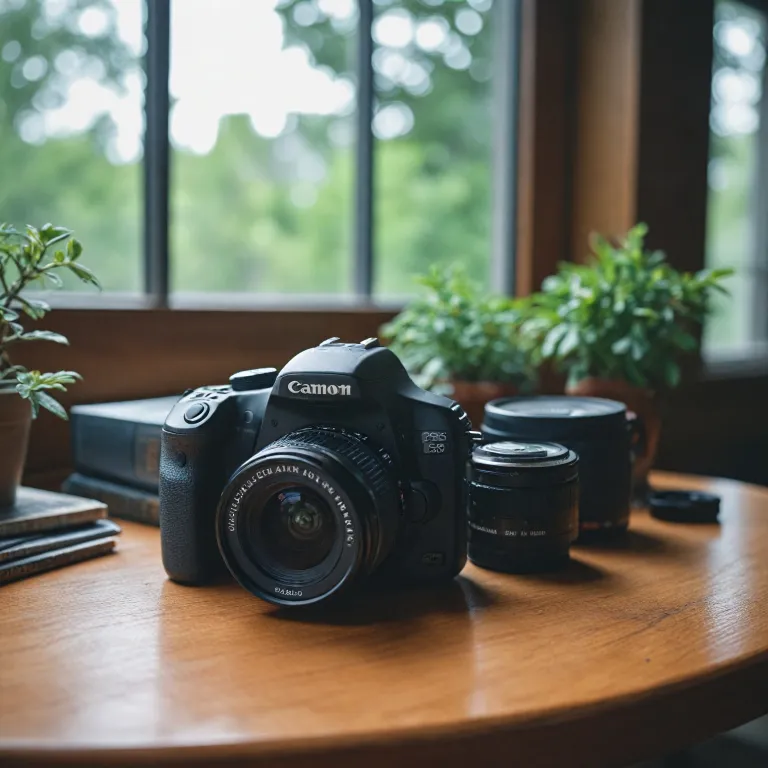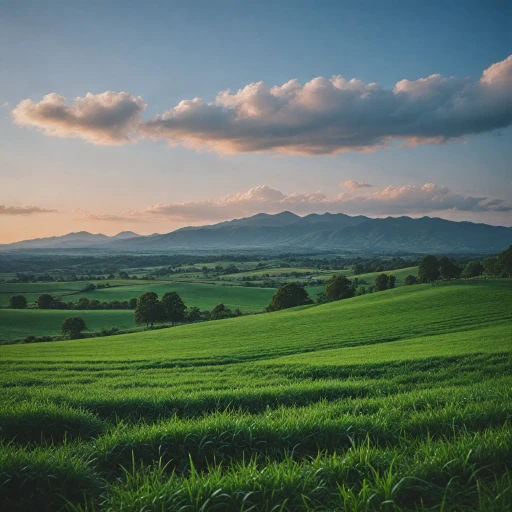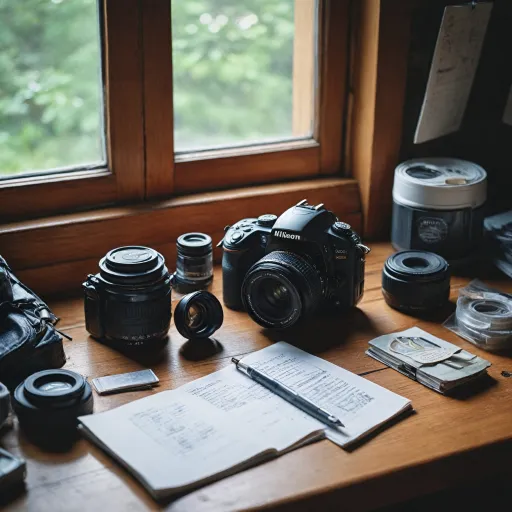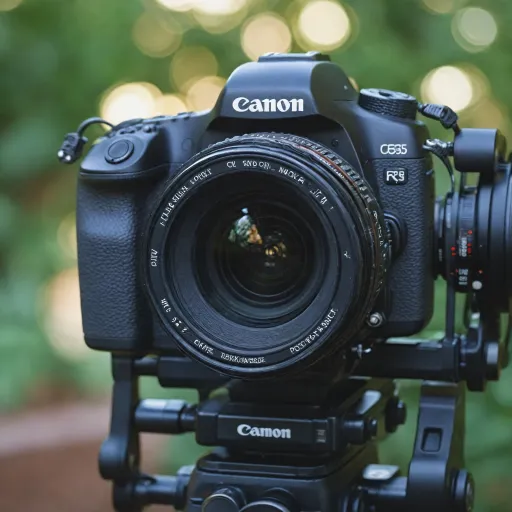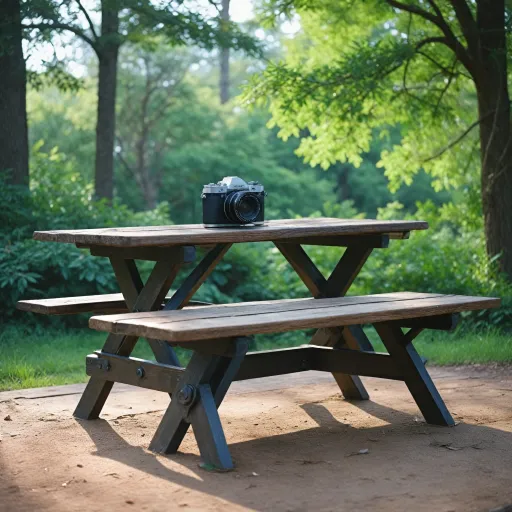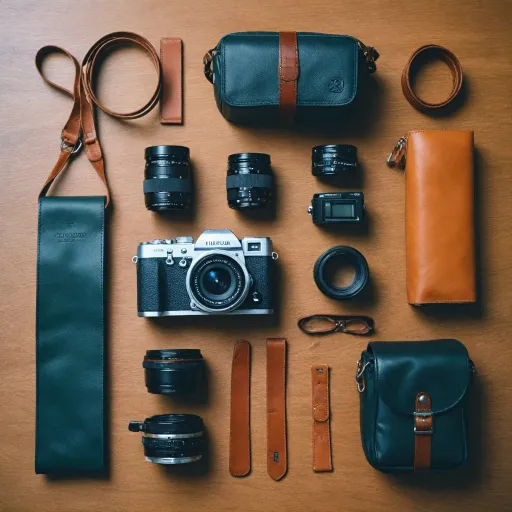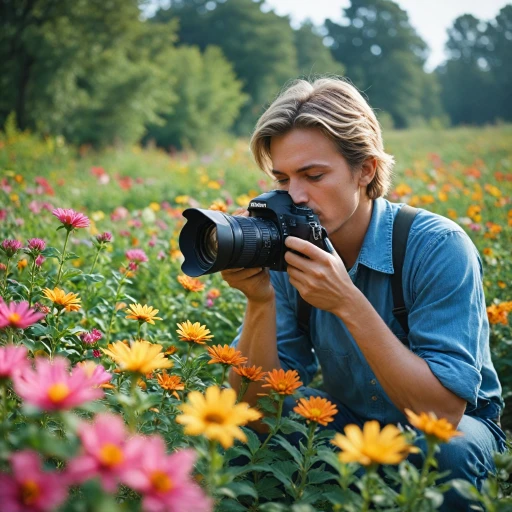
Understanding the Canon 700D Rebel
Meet the Canon 700D Rebel: An Accessible DSLR for Enthusiasts
The Canon 700D Rebel, also known as the EOS Rebel T5i in some regions, is a digital SLR camera designed to help photographers transition from simple point-and-shoot cameras to more advanced photography. As part of the popular Canon EOS Rebel series, this model is often recommended for those who want to learn the basics of DSLR cameras without feeling overwhelmed by complexity.
What Sets the 700D Rebel Apart?
This camera body offers a solid balance between user-friendly controls and features that appeal to those eager to experiment. The 700D Rebel is equipped with an 18-megapixel APS-C CMOS sensor, which is a common sensor type in many digital cameras at this level. Combined with Canon’s DIGIC 5 image processor, the camera delivers reliable image quality and responsive performance, whether you’re capturing stills or recording video.
- Articulating touchscreen: The 3-inch LCD screen flips out and rotates, making it easier to compose shots from creative angles or use Live View mode for video recording.
- Intuitive mode dial: The mode dial offers a range of exposure modes, from full auto to manual, helping users gradually learn more about photography settings.
- Full HD video: The EOS Rebel 700D supports 1080p video recording, a feature that appeals to those interested in both photography and videography.
Who Is This Camera For?
The Canon 700D Rebel is aimed at beginners and enthusiasts who want to explore digital SLR photography without a steep learning curve. Its compatibility with a wide range of Canon EF and EF-S lenses means you can start with the included kit lens and upgrade later as your skills grow. The camera’s design and features also make it a solid choice for those who want to experiment with different types of photography, from portraits to landscapes.
If you’re curious about how the Canon 700D Rebel compares to other digital cameras or want to understand why certain models remain favorites among enthusiasts, you might find this article on enduring camera favorites insightful.
What You’ll Learn in This Article
This guide will help you get familiar with the key features that matter in real use, explore the camera’s strengths and weaknesses in daily photography, and understand lens compatibility and upgrade options. You’ll also find practical tips for getting better photos and a comparison with similar cameras to help you decide if the Canon EOS 700D Rebel is the right digital camera for your needs.
Key features that matter in real use
What Makes the Canon 700D Rebel Stand Out in Everyday Use?
The Canon 700D Rebel, also known as the EOS Rebel T5i, is a digital SLR camera designed to help both beginners and enthusiasts get more from their photography. Its core features are built to make shooting easier, whether you’re capturing family moments, landscapes, or experimenting with creative projects. Let’s break down the practical features that matter most in real-world use.
- 18MP CMOS Sensor: The camera’s APS-C sized sensor delivers detailed images with good dynamic range, making it suitable for prints and cropping without losing quality.
- DIGIC 5 Image Processor: This processor helps the camera handle noise better at higher ISO settings, so you can shoot in lower light without as much grain. It also speeds up overall performance, from autofocus to image review.
- Vari-Angle Touchscreen LCD: The fully articulating 3-inch screen is a real asset for composing shots from tricky angles. The touch interface is intuitive, letting you tap to focus or swipe through images, which is especially handy for those new to DSLRs.
- Hybrid Autofocus System: The 9-point all cross-type AF system is quick and accurate for most everyday scenes. In Live View mode, the hybrid AF helps with smoother focus transitions, which is useful for both stills and video recording.
- Full HD Video Recording: The Canon 700D Rebel offers 1080p video with continuous autofocus, making it a solid choice for those who want to explore video alongside photography. The built-in microphone and external mic input add flexibility for better audio quality.
- Creative Filters and Scene Modes: The mode dial includes a range of exposure modes and creative filters, allowing users to experiment without needing advanced technical knowledge. This helps new photographers learn and grow their skills.
- Lens Compatibility: As part of the EOS system, the camera body works with a wide range of Canon EF and EF-S lenses. This opens up many creative possibilities as you progress in your photography journey.
How These Features Help in Real Photography
In daily use, these features mean the Canon EOS Rebel 700D is responsive, versatile, and forgiving for beginners. The combination of a reliable autofocus system, user-friendly controls, and a robust digital camera body makes it easier to capture sharp, well-exposed photos in different situations. The live view and video recording capabilities also make it a flexible tool for content creators who want to switch between stills and video without hassle.
If you’re interested in how the Canon 700D Rebel compares to another popular entry-level DSLR, check out this comprehensive guide to the Canon Digital Rebel T5 for more insights.
Strengths and weaknesses in daily photography
Everyday Performance: What Stands Out and What Falls Short
The Canon 700D Rebel, also known as the EOS Rebel T5i, is a digital camera that has earned its place among entry-level DSLR cameras. In daily photography, its strengths and weaknesses become clear as you use it for different types of shots, from casual outings to more creative projects.
- Strengths:
- User-Friendly Controls: The mode dial and intuitive button layout make it easy to switch between exposure modes, whether you’re new to digital SLR cameras or upgrading from a compact digital camera.
- Live View and Touchscreen: The fully articulated touchscreen offers a responsive Live View experience, helping with both photography and video recording. This is especially helpful for shooting at awkward angles or when using a tripod.
- Reliable Autofocus: For a camera in this class, the 9-point autofocus system with cross-type sensor at the center is quick and accurate for most everyday scenes.
- Image Quality: The 18MP APS-C CMOS sensor and DIGIC 5 image processor deliver vibrant images with good detail, especially in well-lit conditions.
- Versatile Lens Compatibility: The Canon EOS Rebel 700D supports a wide range of EF and EF-S lenses, allowing you to experiment and upgrade your camera lens as your skills grow.
- Weaknesses:
- Low-Light Limitations: While the camera offers decent ISO performance, noise becomes noticeable at higher ISO settings, which can affect image quality in dim environments.
- Video Features: The video recording capabilities are solid for basic needs, but lack some advanced options found in newer digital cameras, such as 4K resolution or high frame rates.
- Build and Portability: The body is lightweight for a DSLR, but still bulkier than mirrorless cameras or compact digital cameras, which might be a consideration for travel or street photography.
- Battery Life: While respectable, battery life can drop quickly when using Live View or shooting lots of video, so carrying a spare is recommended.
Real-World Scenarios: When the Canon Rebel Shines
For everyday photography, the Canon Rebel excels at family events, travel, and learning the basics of exposure modes. Its responsive autofocus and easy-to-navigate menus help beginners feel confident. The camera’s compatibility with a wide range of lenses means you can start with the kit lens and later explore options like macro or telephoto lenses for more creative shots.
However, if you’re planning to shoot in very low light or need advanced video features, you may find the limitations of this EOS digital SLR more noticeable. For those interested in wedding or event photography, choosing the right lens can make a significant difference in your results. You might find this guide to selecting the ideal lens for wedding photography helpful, even if you’re using a Canon body, as many principles apply across brands.
Overall, the Canon EOS Rebel 700D offers a balanced package for those starting out or looking for a reliable backup camera. Its strengths in user experience and image quality make it a popular choice among digital SLR enthusiasts, while its weaknesses are mostly found in more demanding or specialized photography scenarios.
Lens compatibility and upgrade options
Choosing and Upgrading Lenses for the Canon 700D Rebel
One of the main attractions of the Canon 700D Rebel is its compatibility with a wide range of lenses. This flexibility allows photographers to adapt the camera to different styles and situations, whether you are into portraits, landscapes, or video recording. The Canon EOS 700D uses the EF and EF-S lens mount system, which means you have access to a vast selection of Canon and third-party lenses. This is a key advantage for anyone looking to grow their photography skills over time.
- EF Lenses: These are full-frame lenses, but they work perfectly on the 700D Rebel's APS-C CMOS sensor. They are ideal if you plan to upgrade to a full-frame EOS DSLR camera in the future.
- EF-S Lenses: Specifically designed for Canon's APS-C digital SLR cameras, these lenses are often lighter and more affordable. They cover most everyday photography needs, from wide-angle to telephoto.
- Third-Party Options: Brands like Sigma, Tamron, and Tokina also offer compatible lenses, often at competitive prices. This expands your creative possibilities without breaking the bank.
What to Consider When Upgrading Your Lens
When thinking about upgrading from the kit lens, consider what type of photography you enjoy most. For portraits, a fast prime lens like a 50mm f/1.8 offers beautiful background blur. For landscapes, a wide-angle lens helps capture more of the scene. If you are interested in video, look for lenses with smooth and quiet autofocus to complement the camera's Live View and video recording features.
- Image Stabilization (IS): Helpful for handheld shooting, especially in low light.
- Autofocus Speed: Important for action or wildlife photography.
- Maximum Aperture: A wider aperture (lower f-number) lets in more light and creates a shallow depth of field.
Other Upgrade Paths
The Canon EOS 700D Rebel body is compatible with a range of accessories that can help you get more from your digital camera. External flashes, remote controls, and battery grips are just a few options. As you explore more advanced exposure modes and creative settings on the mode dial, these upgrades can make a noticeable difference in your photography experience.
Remember, the lens you choose can have as much impact on your images as the camera body itself. Investing in quality glass is a smart move for any aspiring photographer using the Canon Rebel series or other EOS digital SLR cameras.
Practical tips for getting better photos
Making the Most of Your Canon 700D Rebel
Getting better photos with your Canon EOS 700D Rebel is not just about having a good camera body or the latest lens. It’s about understanding how to use the features your digital SLR offers and applying some practical techniques. Here are some tips that can help you get the most out of your Rebel DSLR in everyday photography.
- Master the Mode Dial: The mode dial on the Canon Rebel camera gives you quick access to different exposure modes. For beginners, the Scene Intelligent Auto mode is a safe choice, but experimenting with Aperture Priority (Av) or Shutter Priority (Tv) can help you control depth of field and motion blur. Manual mode is great for learning how the camera’s settings interact.
- Use Live View for Composition: The Live View function on the EOS digital SLR is handy for composing shots, especially when shooting at awkward angles. It’s also useful for checking focus before capturing the image.
- Take Advantage of the DIGIC 5 Image Processor: The DIGIC 5 processor in the Canon 700D Rebel helps with fast image processing and noise reduction. This means you can shoot at higher ISO settings in low light without worrying too much about grainy images.
- Explore Video Recording: The camera offers Full HD video recording, so don’t hesitate to use your Rebel DSLR for video projects. Use manual focus for more creative control and try different lenses for unique looks.
- Choose the Right Lens: The kit lens is versatile, but upgrading to a prime lens or a telephoto lens can dramatically improve image quality and open up new creative possibilities. The Canon EOS system supports a wide range of EF and EF-S lenses, so you have plenty of options.
- Understand Your Camera’s Metering and Autofocus: The 700D Rebel’s metering system and 9-point autofocus help you get sharp, well-exposed photos. Try using single-point AF for precise focus, especially in portraits.
- Keep Your Sensor Clean: Dust on the CMOS sensor can ruin your photos. Use the camera’s built-in sensor cleaning function and consider a professional cleaning if you notice persistent spots.
- Read the Manual and Trusted Articles: The official Canon manual and reliable articles or books about digital cameras can help you discover features you might overlook. Don’t hesitate to revisit these resources as you grow in your photography journey.
Quick Table: Settings for Common Scenarios
| Scenario | Recommended Mode | ISO | Lens Type |
|---|---|---|---|
| Portraits | Aperture Priority (Av) | 100-400 | 50mm f/1.8 |
| Sports/Action | Shutter Priority (Tv) | 400-1600 | Telephoto Zoom |
| Low Light | Manual/Av | 800-3200 | Wide Aperture Prime |
| Landscapes | Aperture Priority (Av) | 100 | Wide Angle |
With these practical tips and a bit of experimentation, your Canon 700D Rebel can help you capture better photos, whether you’re shooting stills or video. Remember, every digital camera—including the EOS Rebel series—offers unique strengths, so take time to explore and enjoy your photography journey.
Comparing the Canon 700D Rebel to similar cameras
How Does the Canon 700D Rebel Stand Against Its Rivals?
When looking at the Canon 700D Rebel, it’s natural to wonder how it compares to other digital cameras in its class. The entry-level DSLR market is crowded, with several models offering similar features. Here’s a practical comparison to help you decide if the 700D Rebel is the right camera body for your photography needs.- Canon EOS Rebel T5i (700D) vs. Canon EOS Rebel T6i (750D): The T6i offers a higher resolution sensor (24MP vs. 18MP), built-in Wi-Fi, and a more advanced autofocus system. However, the 700D Rebel still delivers excellent image quality, a responsive DIGIC 5 image processor, and a user-friendly mode dial, making it a solid choice for beginners who don’t need the latest features.
- Canon EOS Rebel 700D vs. Nikon D5300: Nikon’s D5300 brings a 24MP sensor and built-in GPS, but the Canon 700D Rebel stands out with its intuitive touchscreen LCD and reliable live view mode. The Canon’s lens ecosystem is also vast, offering many upgrade options for both photography and video recording.
- Canon 700D Rebel vs. Mirrorless Cameras: Mirrorless models like the Sony Alpha series are lighter and often offer faster burst rates. However, the 700D Rebel’s optical viewfinder and longer battery life appeal to those who prefer the traditional DSLR camera experience. The camera’s compatibility with a wide range of Canon EF and EF-S lenses also adds flexibility.
What Sets the 700D Rebel Apart?
- The articulated touchscreen is a standout for shooting video and using live view.
- The camera’s exposure modes and mode dial are straightforward, making it easy for new users to experiment.
- While newer digital cameras may offer more megapixels, the 700D Rebel’s 18MP CMOS sensor still produces sharp, vibrant images suitable for most uses.
